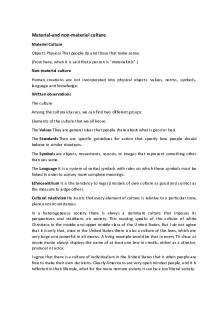Extrinsic Material PDF

| Title | Extrinsic Material |
|---|---|
| Author | Thành Nguyễn |
| Course | Interpreting the Law |
| Institution | University of Wollongong |
| Pages | 5 |
| File Size | 124.3 KB |
| File Type | |
| Total Downloads | 48 |
| Total Views | 131 |
Summary
Detailed summary of Extrinsic Material use in Interpretation...
Description
WEEK 7 – EXTRINSIC MATERIALS INTRODUCTION The modern approach to statutory interpretation requires consideration of the context in its widest sense. This includes the state of affair prior to the Act and the mischief to which it was directed. The mischief rule was stated in Heydon’s Case: Statutes were drafted in a form very different from that which they assume today. Parliaments of those days were chary of creating exceptions to the common law, and when they did so, thought it necessary to incorporate in the statute the reason which justified the changes in the common law that the statute made. In the 16th C, enacting words contained lengthy preambles reciting the particular mischief or defect in the common law that the enacting words were designed to remedy. Modern Acts contain detailed Preambles; it may be possible to identity the mischief from the Act itself (eg: if it is a section concerning the objects of the Act or is apparent from the terms of the section to be construed). Extrinsic matters: Previous state of the law History associated with the passage of the legislation Extrinsic materials: o Shed light on the meanings which words are capable of bearing o Show how expressions are used in other Acts which pre-date that in question GENERAL COMMON LAW APPROACH Modern Approach At common law, any material relevant to context may be considered. CIC Insurance Ltd v Bankstown Football Club Ltd The court may have regard to reports of law reform bodies to ascertain the mischief which a statute is intended to cure. The modern approach to statutory interpretation: (a) insists that the context be considered in the first instance, not merely at some later stage when ambiguity might be thought to arise; and (b) uses context in its widest sense to include such things as the existing state of the law and the mischief. No limit is placed at common upon the kinds of extrinsic material to which reference may be made Though there are limits on the use that may be made of it. In particular, it may not be used to o Place upon words a meaning they cannot reasonably bear or o Identify and give effect to the meaning parliamentarians, draftspersons or others subjectively intended to words to have
WEEK 7 – EXTRINSIC MATERIALS Ambiguity - It is uncertain whether reference to extrinsic material is permitted at common law only if the construction of a provision is doubtful after application of the ‘ordinary rules of statutory construction’. Prior to CIC Insurance Ltd, there was uncertainty as to whether it was permissible at common law to have recourse to extrinsic material without first identifying ambiguity in the statutory provision Lexical or verbal ambiguity and syntactic or grammatical ambiguity Circumstances in which the intention of the legislature is doubtful Saeed v Minister for Immigration & Citizenship: It is erroneous to look at extrinsic materials before exhausting the application of the ordinary rules of statutory interpretation If the meaning which would otherwise be attributed to the statutory text is plain, extrinsic material cannot alter it Only when the meaning of the text is doubtful that consideration of extrinsic material might be of assistance Not only must the ordinary rules be applied first but if the construction is not doubtful after their application, reference must not be made to extrinsic material / Ambiguity be identified before recourse to extrinsic material Since CIC Insurance Ltd, context may be considered in the first instance, without identifying ambiguity; reference to extrinsic material was also permissible in the first instance, without identifying ambiguity. Conflict + position remains uncertain Why not extrinsic materials when words are plain and have clear meaning? Cost (extra hearing, prolonging of proceedings, adjournment) and delay, undermine rule of law and access to the law, judges make estimation/approximation of intent avoid this Test to apply extrinsic materials: Confirm the ordinary meaning of the words Determine the meaning of the text that is ambiguity (note that judicial function is to give effect to the Acts as much as the law allow, not to impute the Acts) Determine the meaning when the ordinary meaning produces absurdity or unreasonable outcome (s15AB of Acts Interpretation Act) Later Acts if inconsistent with previous Acts they shed light but not supposed to replace the previous Acts (as opposed to when Acts expressly say something with regard to previous Acts, for instance this means this Court cannot overturn that as it is a command) PREVIOUS STATE OF LAW General Extrinsic material may be considered to identify the state of the law prior to the enactment of the Act of be interpreted. At common law, courts regularly inform themselves of the state of domestic law by reports of cases, texts of public Acts and authoritative writings such as textbooks. This justifies the reception of material extrinsic to the Act to be interpreted in order to understand the state of the law prior to its enactment. An understanding of the previous state of the law may be relevant in a number of ways: Assist to identify the mischief to which the Act was directed
WEEK 7 – EXTRINSIC MATERIALS Reveal that the state of the law as it was understood at the time of enactment was different from the present understanding Generally, the history of legislative regulation of the particular subject matter regulated by a provision to be construed may assist to understand how words were used At common law, consideration may thus be given to a summary of the state of the law contained in a law reform commission report which preceded the Act. Presumption from Re-enactment or Amendment Words are presumed that they have the same construction when used in a subsequent Act, but this is generally a weak presumption. The presumption from re-enactment rests on the proposition that the legislature is taken to have considered and accepted the interpretation given to the words – the repetition of a provision which has been dealt with by the courts means that a judicial interpretation has been legislatively approved The presumption is of no great weight concerning the meaning of the words used and cannot be relied upon to perpetuate an erroneous construction In specialized and technical fields, where legislation is often amended, and judicial decisions carefully scrutinized by those responsible for amendments, the basis of the presumption may be sound and the presumption may consequently have real force The presumption has been applied to words which are in substance the same It did not apply where the words, thought the same, appeared in a somewhat different context The presumption applies only if the construction adopted in a previous decision formed part of the ratio of the decisions or was considered dicta The presumption does not apply where the subsequent Act is simply a consolidation of earlier Acts, for then Parliament is taken to have been addressing its mind only to the form of the law not its content Where words in a provision of a statute have received a judicial construction and the provision is later amended without altering the interpreted words, it is presumed that that the legislature is content with that interpretation, but this is generally a weak presumption. This principle extended to an amendment made not to the interpreted provision itself but to one or more other provisions which, when taken together with the interpreted provision, deal exhaustively with a particular subject. Where words in a provision of a statute have received a judicial construction and the provision is later re-enacted or amended so as to be in an altered form, it is presumed that it has a different meaning. LEGISLATIVE HISTORY Introduction – Legislative history of a typical Act may include:
Law reform commission report Explanatory memoranda Amendments to the Bill in its passage through Parliament Speeches in Parliament about the Bill
An Act which implements a treaty will be preceded by:
WEEK 7 – EXTRINSIC MATERIALS The treaty Material associated with the drafting, negotiation and agreement of the treaty Common Law It is permissible to refer to law reform commission reports to identify the context of an enactment in its widest sense, including the sate of the law prior to enactment and the mischief sought to be remedied. Though usually the law reform commission is that of the jurisdiction whose legislation is to be interpreted, that of another jurisdiction may be relevant, for instance where it precedes substantially uniform national legislation. Traditional common law position: It was not permissible to refer to parliamentary materials for any purpose o Amendments made to a Bill during its passage through Parliament o Statements made in Parliament Parliamentary materials could be used for the purpose of identifying the mischief sought to be remedied by an Act. By the 1970s, reference to parliamentary materials was forbidden even for this purpose Modern common law approach:
Permits recourse to parliamentary materials to identify the context in its widest sense, including the existing state of the law and the mischief sought to be remedied Prominent among the parliamentary materials that are often referred to are o Second Reading Speech and o Any explanatory memorandum prepared in relation to the Act in question Interpretation Act Provisions Permits consideration of extrinsic material for certain purposes. Though the Cth, NSW, NT, QLD, TAS and WA provisions are unlimited as to the kinds of extrinsic material which may be considered, they limit the use that may be made of such material: Eg: Cth provision, s 15AB(1)(a), (b)1(i) and (b)(ii) of the Acts Interpretation Act 1901 Cth) when read together: unless a provision is ambiguous or obscure, or its ordinary meaning, taking into account its context in the Act and the purpose or object underlying the Act, leads to a result that is manifestly absurd or is unreasonable, extrinsic material may only referred to pursuant to s 15AB to confirm that the meaning is in fact the ordinary meaning in the sense just mentioned / Absent ambiguity, obscurity, manifest absurdity or unreasonableness, extrinsic material cannot be relied upon pursuant to s 15AB to depart from a meaning determined without the extrinsic material o Ambiguity must appear without reference to the extrinsic material: s 15A(1)(b)(i) does not permit the bootstrapping approach of referring to extrinsic material to create an ambiguity o S 15AB does not permits reference to extrinsic material to identify the purpose of a provision or an Act – S 15AB(1)(a) and 15AB(1)(b)(ii) assume that the purpose is identified before taking into account extrinsic material o Extrinsic material going to purpose can be considered to determine the meaning of a provision if the provision is ambiguous or obscure
WEEK 7 – EXTRINSIC MATERIALS Extrinsic material going to purpose can also be considered t confirm the ordinary meaning of the provision or if the ordinary meaning leads to a result that is manifestly absurd or is unreasonable All of the Interpretation Act provisions confer a discretion on the court whether to consider extrinsic material Some of the provision specify certain matters which must, in addition to any other matters, be taken into account in the exercise of that discretion and in deciding what weight to give to such material o
Limitations on Use of Legislative History No matter the context disclosed by the legislative history, it is impermissible to attach to a statutory provision a meaning which the words of the provision cannot reasonably bear Materials from the legislative history, such as law reform commission reports and parliamentary materials, cannot be relied upon to identify the meaning of a statutory provision that the author or speaker subjectively intended the provision to have...
Similar Free PDFs

Extrinsic Material
- 5 Pages

Extrinsic & Intrinsic Aids
- 3 Pages

Extrinsic Materials (s15AB)
- 3 Pages

MATERIAL-
- 23 Pages
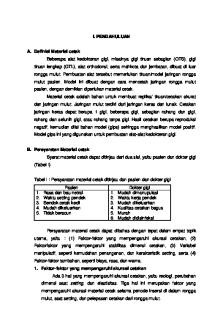
Material Cetak
- 40 Pages

material-handling.pdf
- 245 Pages

material komposit
- 22 Pages
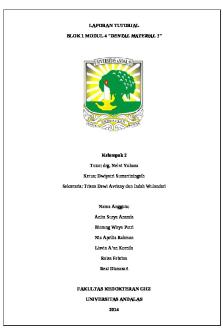
Dental Material
- 24 Pages

Material 3Diseños
- 11 Pages
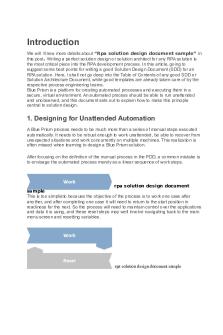
2 - Material
- 5 Pages
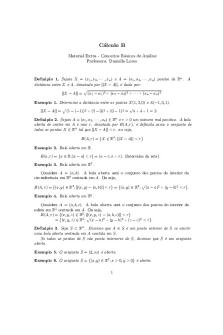
Material extra
- 2 Pages

practice Material ....
- 8 Pages
Popular Institutions
- Tinajero National High School - Annex
- Politeknik Caltex Riau
- Yokohama City University
- SGT University
- University of Al-Qadisiyah
- Divine Word College of Vigan
- Techniek College Rotterdam
- Universidade de Santiago
- Universiti Teknologi MARA Cawangan Johor Kampus Pasir Gudang
- Poltekkes Kemenkes Yogyakarta
- Baguio City National High School
- Colegio san marcos
- preparatoria uno
- Centro de Bachillerato Tecnológico Industrial y de Servicios No. 107
- Dalian Maritime University
- Quang Trung Secondary School
- Colegio Tecnológico en Informática
- Corporación Regional de Educación Superior
- Grupo CEDVA
- Dar Al Uloom University
- Centro de Estudios Preuniversitarios de la Universidad Nacional de Ingeniería
- 上智大学
- Aakash International School, Nuna Majara
- San Felipe Neri Catholic School
- Kang Chiao International School - New Taipei City
- Misamis Occidental National High School
- Institución Educativa Escuela Normal Juan Ladrilleros
- Kolehiyo ng Pantukan
- Batanes State College
- Instituto Continental
- Sekolah Menengah Kejuruan Kesehatan Kaltara (Tarakan)
- Colegio de La Inmaculada Concepcion - Cebu

